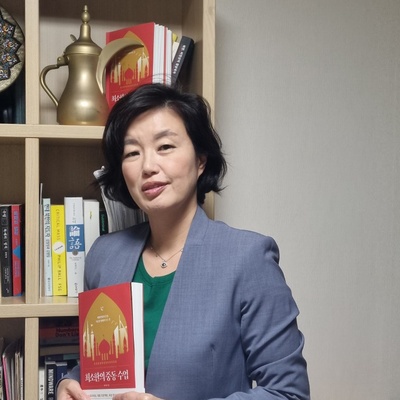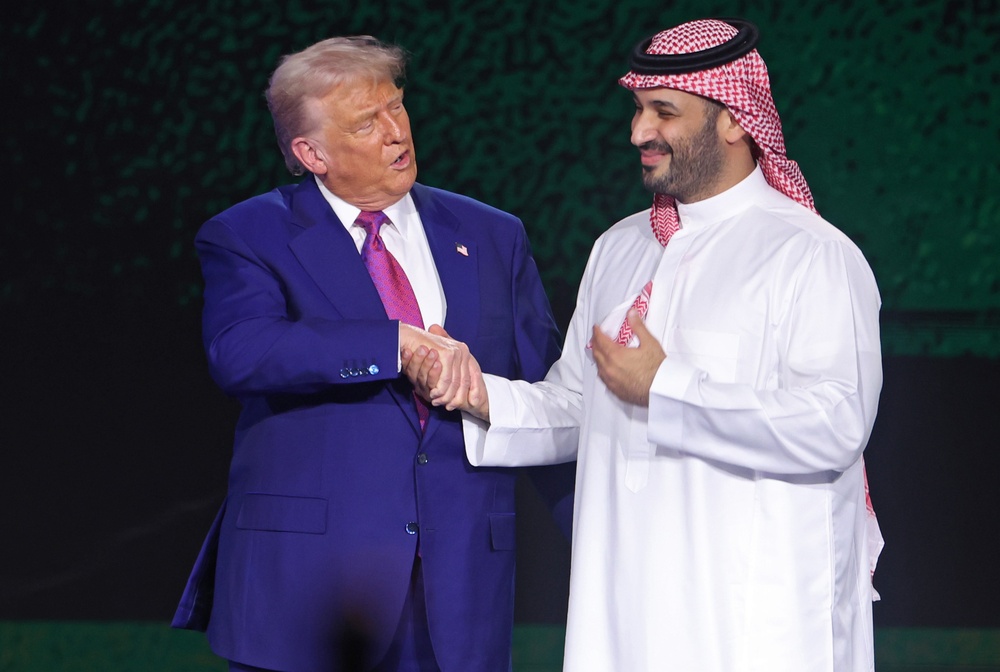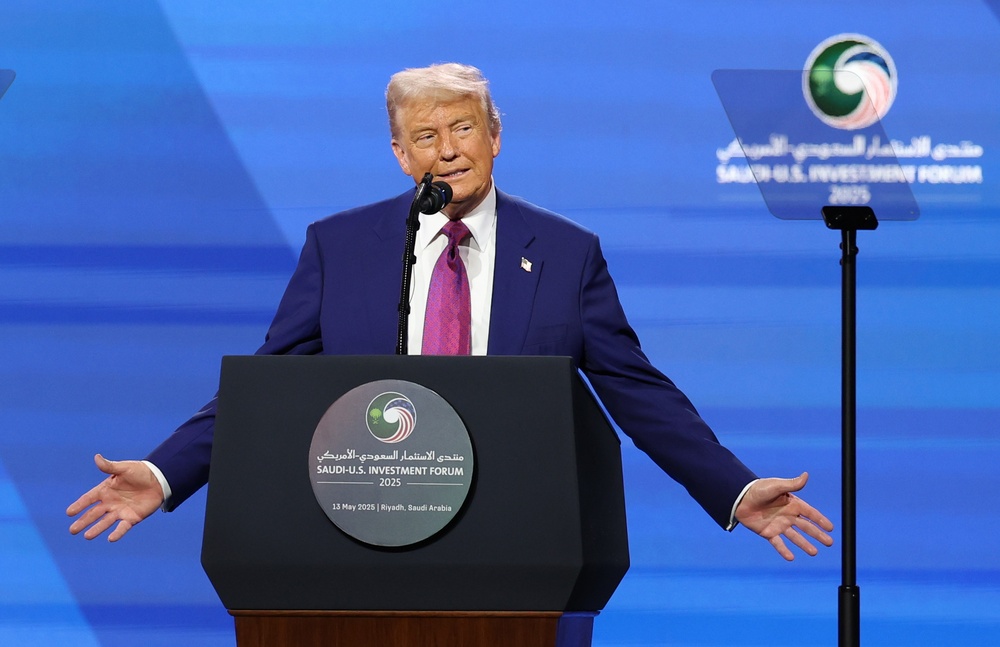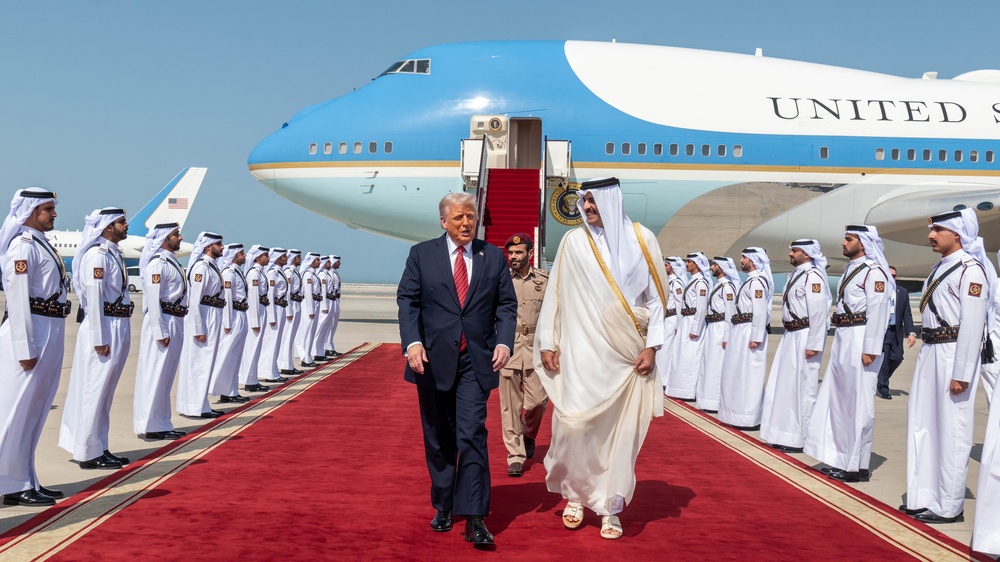

-
The Gulf visit
exemplified Trump’s pragmatic, deal-driven diplomatic style—highlighting his
strategy of prioritizing economic partnerships with Gulf states—and is widely
seen as a calculated effort to reassert U.S. influence in the Middle East while
securing substantial economic gains.
-
Saudi Arabia is thus
carefully balancing its strategy: responding flexibly to Iranian aggression
while remaining open to U.S.-brokered normalization with Israel.
-
South Korea is thus
well-positioned to advance practical cooperation by leveraging areas of
overlapping interest with the region.
In
May 2025, President Donald Trump embarked on his first overseas trip of his
second term, visiting Saudi Arabia, Qatar, and the United Arab Emirates. The
visit drew significant attention as a strategic move aimed at reshaping the
diplomatic landscape of the Middle East, marked by lavish receptions and the
signing of large-scale economic agreements.
In
Saudi Arabia, President Trump met with Crown Prince Mohammed bin Salman (MbS),
and finalized investment deals totaling $600 billion across the defense,
artificial intelligence, and energy sectors. Notably, the crown prince had
first unveiled the plan in a surprise announcement just two days after Trump’s
inauguration this January. In Qatar, Trump announced $1.2 trillion in economic
cooperation, including a major agreement to purchase 210 Boeing aircraft. In
the UAE, he signed a $200 billion agreement focusing on technology and
infrastructure investments.
The
Gulf visit exemplified Trump’s pragmatic, deal-driven diplomatic
style—highlighting his strategy of prioritizing economic partnerships with Gulf
states—and is widely seen as a calculated effort to reassert U.S. influence in
the Middle East while securing substantial economic gains. Whereas Trump’s
first term emphasized support for Israel and pressure on Iran, his second-term
policy has pivoted toward advancing U.S. economic interests through deeper
partnerships with the Gulf states. President Trump is aggressively pushing for
foreign investment into the United States, with a strong emphasis on reviving
domestic manufacturing, creating jobs, and securing American energy dominance.
Through
this strategy, President Trump has deliberately positioned Saudi Arabia—above
all others—as a key partner in both investment and security, carefully
cultivating the bilateral relationship. Central to this approach is Crown
Prince MbS, who quickly captured Trump’s attention with the bold and strategic
announcement of a massive investment deal just two days after the
inauguration—regardless of whether it would ultimately be implemented.
As
a gesture of appreciation, Trump chose Saudi Arabia as the first destination of
his overseas tour and reportedly urged MbS to raise the total investment to $1
trillion. Even prior to the visit, Trump had helped elevate Saudi Arabia’s
global standing by setting the stage for its emergence as an international
mediator. In March, Crown Prince MbS hosted delegations from Ukraine, Russia,
and the United States, leading a series of meetings that culminated in the
announcement of a 30-day ceasefire. Although Ukrainian and Russian
representatives did not meet face-to-face, the crown prince conducted active
shuttle diplomacy between Riyadh and Jeddah. Embracing a new diplomatic
slogan—“positive neutrality”—MbS also expressed his ambition to mediate between
the United States and Iran.
Then,
what are the crown prince’s true motivations? Saudi Arabia’s pledge to invest
under Trump’s second term does not simply reflect blind alignment with the
United States. Instead, the kingdom is calculating how best to maximize its
leverage amid the complex dynamics of U.S.-China rivalry and the Israel-Iran
confrontation. While cooperation with the United States and Israel remains a
central pillar of Saudi foreign policy, Riyadh also views Iran’s military
adventurism and America’s retreat from the Middle East as major security risks.
Iran’s pursuit of nuclear weapons poses an existential threat, whereas Israel’s
advanced technologies are seen as tools to support Saudi Arabia’s economic
transformation and to compensate for the strategic vacuum left by a disengaging
U.S.
After
Israel launched its “New Order” campaign in the wake of the October 2023 war
with Hamas—severely weakening Iranian-backed proxies like Hamas and Hezbollah,
and inflicting major damage on the Islamic Revolutionary Guard Corps in the
region—Saudi Arabia quietly welcomed the outcome.
Nonetheless,
the kingdom avoids directly confronting Iran, just as it refrains from
antagonizing China or isolating Russia. Historically, every time Israel has
increased military pressure on Iran, Tehran has retaliated by targeting Saudi
oil facilities through its Houthi proxies in Yemen. In response, Riyadh has
even directly urged Washington to restrain Israel’s escalatory actions against
Iran.
Saudi
Arabia is thus carefully balancing its strategy: responding flexibly to Iranian
aggression while remaining open to U.S.-brokered normalization with Israel. In
return, it is demanding firm U.S. security guarantees and support for a
civilian nuclear program—leveraging China’s offers of military and nuclear
cooperation as a bargaining chip. Still, in terms of technological superiority
and reliability, Saudi Arabia continues to favor the United States and is
expected to actively engage in the joint U.S.-Israel-Arab missile defense
network to counter provocations by Iranian proxies. This strategic hedging is
made possible, for now, by the kingdom’s oil wealth—even in an era of lower oil
prices. But ultimately, the crown prince and the royal family understand better
than anyone that time is not on Saudi Arabia’s side.
The
Israel-Hamas war has triggered a rapid shift in the regional order. With
Israel’s military offensives and the Trump administration’s return, Iran and
the so-called “Axis of Resistance” have been temporarily set back, while the
Gulf states and Israel have gained prominence—creating a strategic opening for
South Korea to expand its influence and diplomatic footprint. For South Korea,
the Gulf states serve as its largest energy suppliers and a high-value export
market with substantial purchasing power. In return, South Korea offers
critical technologies and a development model that align with the Gulf nations’
top-level reform agendas—focused on industrial diversification, social
liberalization, and the recalibration of foreign and security policy.
Most
notably, Saudi Arabia and other Gulf states are actively pursuing defense
self-reliance and the acquisition of defense technologies in response to both
the U.S. pivot away from the Middle East and Iran’s military expansionism.
Thanks to its long-term strategic focus, South Korea has built internationally
competitive capabilities in the defense and nuclear energy sectors. The country
has recently emerged as the world’s ninth-largest arms exporter, with the
Middle East accounting for one-third of the global arms trade. Korean tanks and
artillery systems have been introduced through joint training exercises with
the UAE and Qatar. With the signing of the Korea-GCC Free Trade Agreement and
the Korea-UAE Comprehensive Economic Partnership Agreement in 2024, tariffs on
arms exports have been lifted, paving the way for expanded defense cooperation
with the Gulf states.
Additionally,
building on the success of the Barakah nuclear power plant in the UAE, South
Korea has been pursuing nuclear reactor contracts in Saudi Arabia, Egypt, and
beyond. The bilateral agreement on U.S.-ROK nuclear export cooperation signed
in 2025 is expected to accelerate South Korea’s entry into the Middle Eastern
nuclear market. South Korea is thus well-positioned to advance practical
cooperation by leveraging areas of overlapping interest with the region.
Meanwhile,
contributing to the post-war reconstruction of Gaza represents a critical opportunity
for both South Korea and its Middle Eastern partners to fulfill
responsibilities commensurate with their global stature and share in
international leadership. While South Korea has increased its aid and
humanitarian support to the region in recent years, its overall contributions
still fall short—less than half the OECD Development Assistance Committee (DAC)
average. In particular, humanitarian assistance to Palestine is a sensitive and
highly symbolic issue—closely monitored by Gulf states, Israel, Iran, and the
United States alike, all of whom see it as a matter of legitimacy. South Korea
must therefore step up its involvement in Gaza’s reconstruction and
peacebuilding efforts to establish itself as a trusted and responsible actor in
the region.

Dr. JANG Ji-Hyang is a Principal Fellow and director of the Center for Regional Studies at the Asan Institute for Policy Studies. Dr. Jang served as a policy advisor on Middle East issues to South Korea’s Ministry of Foreign Affairs (2012-2018) and currently serves to Ministries of Industry, Justice, and Defense. Her research interests include political economy of the Middle East and North Africa, political Islam, comparative democratization, terrorism, and state-building. Dr. Jang is the author of numerous books and articles, including The Essential Guide to the Middle East (Sigongsa 2023 in Korean), The Arab Spring: Will It Lead to Democratic Transitions?(with Clement M. Henry (eds.), Palgrave Macmillan 2013), “Disaggregated ISIS and the New Normal of Terrorism” (Asan Issue Brief 2016), “Islamic Fundamentalism” (International Encyclopedia of the Social Sciences 2008) and a Korean translation of Fawaz Gerges’ Journey of the Jihadist: Inside Muslim Militancy (Asan Institute 2011). Dr. Jang received a B.A. in Turkish studies and M.A. in political science from the Hankuk University of Foreign Studies and her Ph.D. in political science from the University of Texas at Austin.

